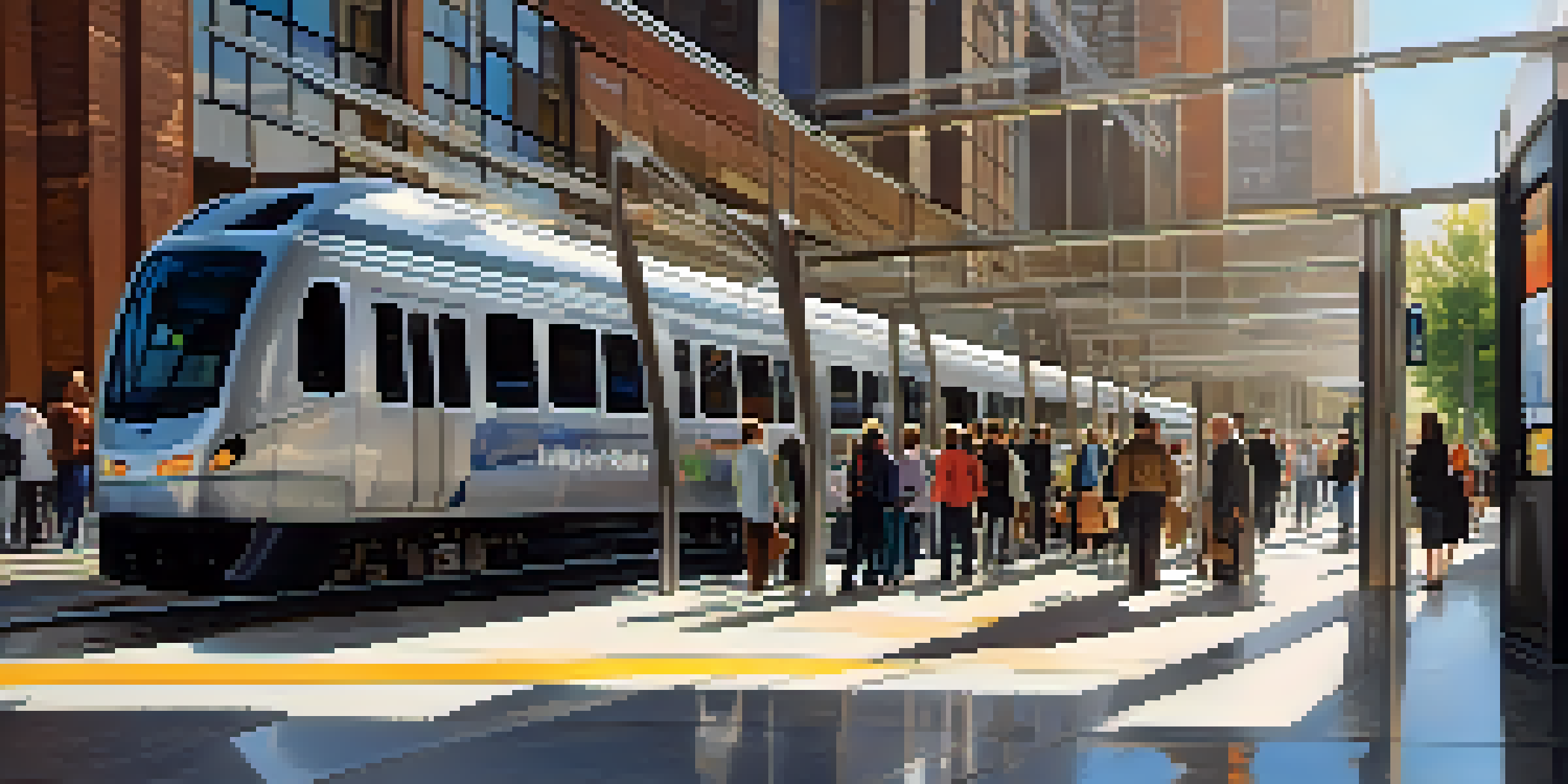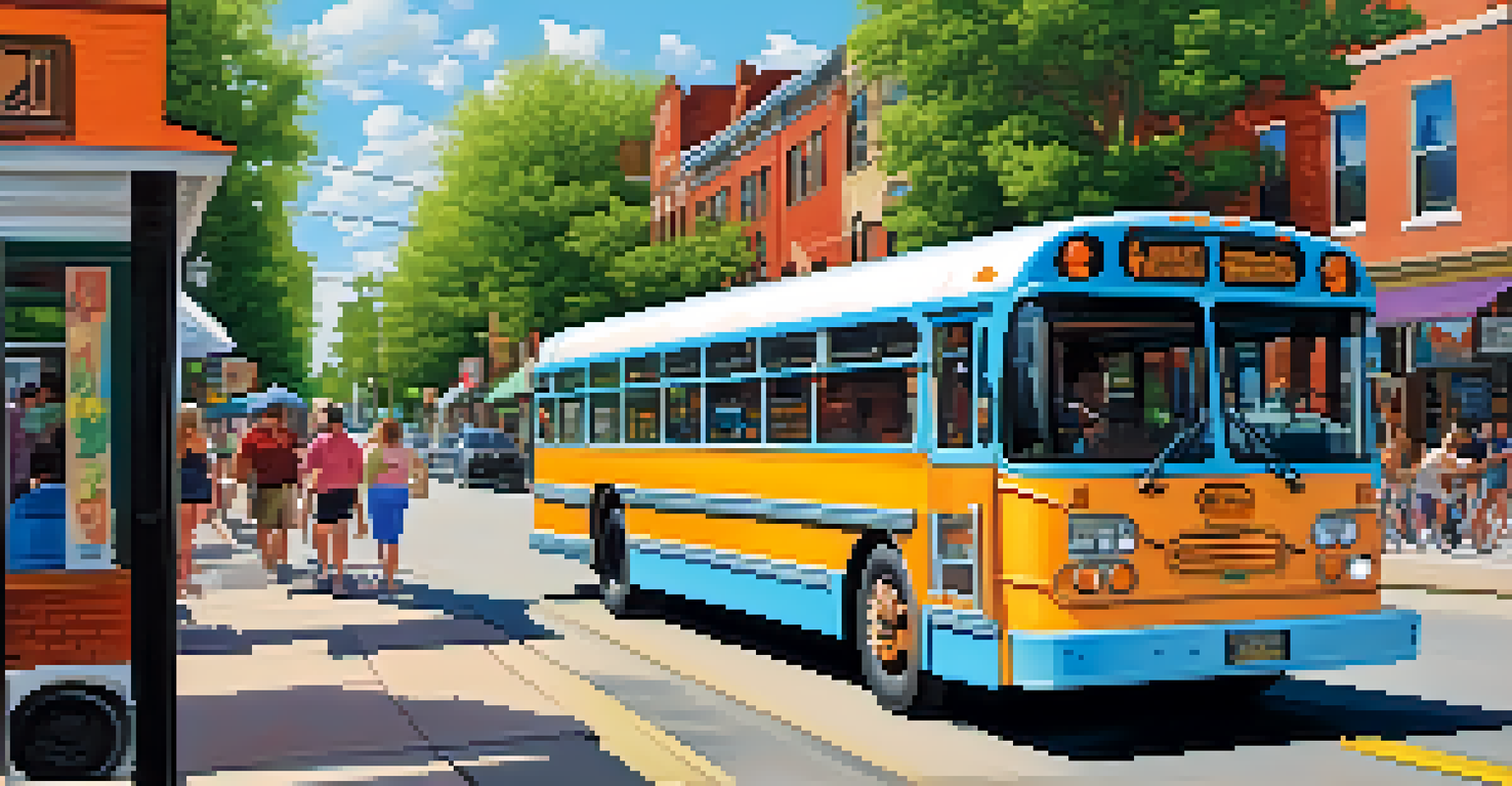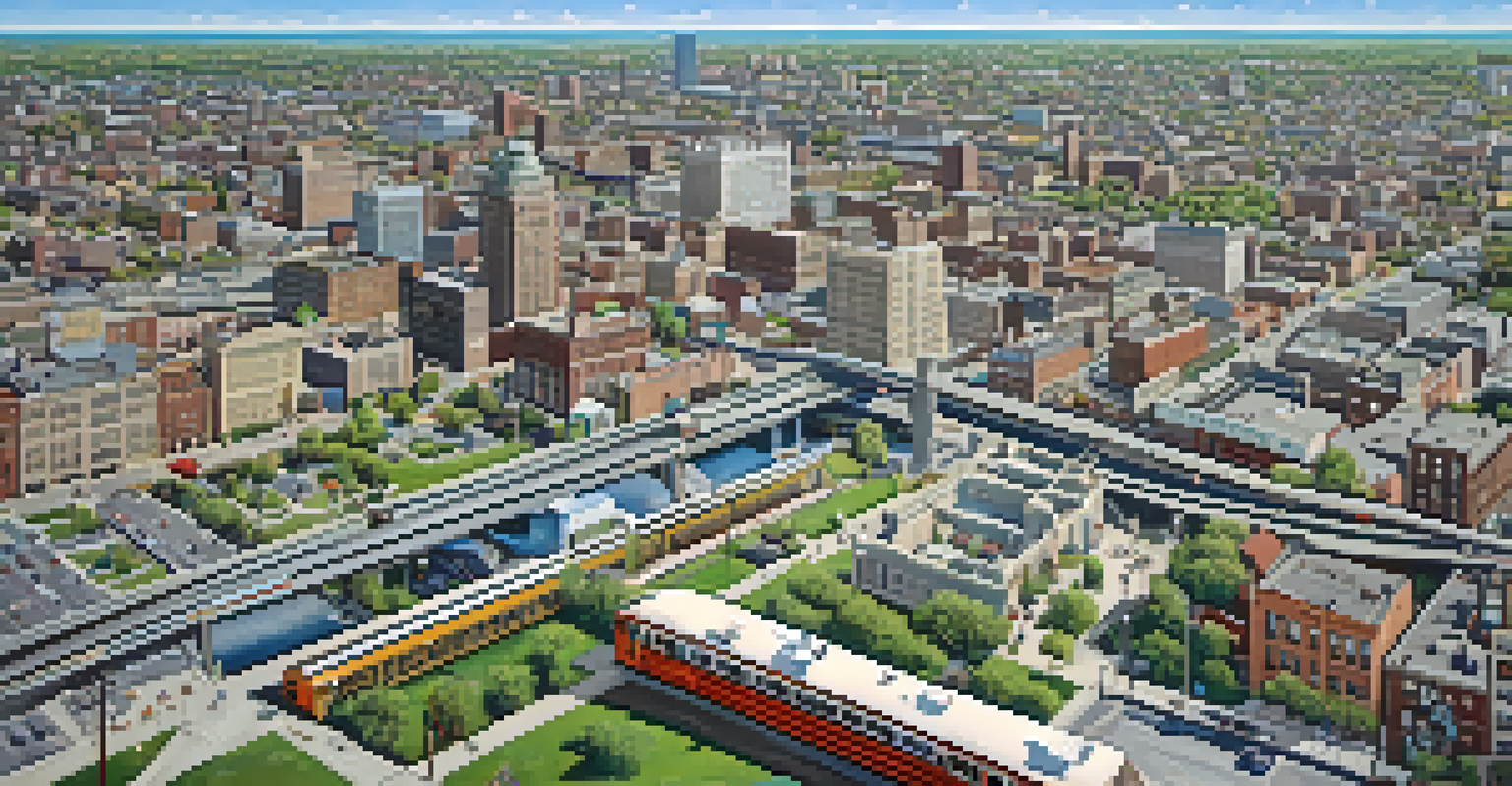Exploring Buffalo's Public Transportation: An Overview

Introduction to Buffalo's Public Transportation System
Buffalo, New York, boasts a public transportation system that connects various neighborhoods, making it easier for residents and visitors to explore the city. The system is primarily managed by the Niagara Frontier Transportation Authority (NFTA), which oversees buses and light rail services. With a rich history and ongoing improvements, Buffalo's public transit offers a reliable alternative to driving.
Public transport is not just about getting from A to B; it's about connecting people and communities.
The city’s public transportation is designed to be user-friendly, catering to a diverse population. It not only serves commuters heading to work but also provides access to educational institutions, shopping areas, and recreational spots. This inclusivity makes Buffalo an accessible city for everyone, regardless of their mode of travel.
Whether you're a local or a visitor, understanding how to navigate Buffalo's public transportation can enhance your experience. From the extensive bus routes to the scenic light rail, there’s plenty to discover without the hassle of parking or traffic.
Types of Public Transportation Available
Buffalo's public transportation system consists mainly of buses and the light rail, each serving specific routes and areas of the city. The bus network is extensive, with over 40 routes that cover the city and surrounding suburbs, making it a convenient option for many. On the other hand, the light rail provides a direct route from the University at Buffalo to downtown, with several stops along the way.

In addition to buses and light rail, NFTA also offers paratransit services for individuals with disabilities. This ensures that everyone can access public transportation, reinforcing the city’s commitment to inclusivity. With these various options, residents can choose the mode that best fits their needs.
Buffalo's Transit System Overview
Buffalo's public transportation, managed by NFTA, includes an extensive bus network and light rail, connecting neighborhoods and providing access to key areas.
It's also worth noting that ridesharing services are available in Buffalo, complementing the public transportation system. This flexibility allows users to plan their trips based on their schedules and preferences, creating a well-rounded transportation ecosystem.
Fares and Passes: What You Need to Know
Navigating fare structures can sometimes be a hassle, but Buffalo's public transportation keeps it simple. The fare for a one-way trip on the bus or light rail is affordable, and various passes are available for frequent riders. For those who plan on using public transit regularly, a monthly pass can save money and provide unlimited rides within that period.
A city’s public transport system is the lifeblood of its economy and the heartbeat of its culture.
Additionally, NFTA offers discounts for seniors, students, and individuals with disabilities, ensuring that public transportation remains accessible for everyone. To make the payment process even easier, riders can use the NFTA’s mobile app to purchase tickets directly from their smartphones.
Understanding the fare system not only helps in budgeting but also enhances the overall experience of using public transportation. With clear options and discounts, Buffalo makes it easy for residents and visitors to get around the city affordably.
Navigating the Light Rail System
The light rail system in Buffalo is often praised for its efficiency and ease of use. Spanning approximately six miles, it runs from the University at Buffalo through downtown and into the waterfront area. Riders can enjoy a scenic view of the city while traveling, making it a pleasant way to commute or explore.
Stations are conveniently located near popular attractions, including Canalside and the KeyBank Center, making it easy for tourists to access these spots. The light rail operates frequently, with trains arriving every 10 to 15 minutes during peak hours, which minimizes wait times and enhances the overall user experience.
Affordable Fares and Passes
The fare structure in Buffalo's public transit is designed to be simple and affordable, with various passes and discounts available for frequent riders and specific groups.
For first-time riders, it’s helpful to familiarize yourself with the schedule and routes before starting your journey. With a little planning, using the light rail can be a seamless and enjoyable way to navigate Buffalo.
Bus Routes: Exploring Buffalo Neighborhoods
Buffalo's bus routes are designed to connect various neighborhoods, making it easy to explore the city’s diverse areas. Each route is marked with clear signage and schedules, helping riders find their way efficiently. With over 40 routes in operation, there's a bus to almost every corner of the city.
From the vibrant Elmwood Village to the historic Allentown, each neighborhood has its unique character and charm. Riding the bus allows you to experience local culture, including shops, restaurants, and community events, all while taking in the sights of Buffalo.
To make the most of your bus experience, consider planning your route in advance. Knowing when and where to catch your bus can turn your trip into a delightful adventure, showcasing the best of what Buffalo has to offer.
Tips for Using Buffalo's Public Transportation
While using public transportation in Buffalo is generally straightforward, a few tips can enhance your experience. First, always check the schedules ahead of time, as routes and frequencies can vary, especially on weekends and holidays. Being aware of peak hours can also help you avoid crowded buses or trains.
Another useful tip is to keep track of your belongings while riding. Public transportation is safe, but being mindful of your personal items adds an extra layer of comfort. Additionally, familiarize yourself with the rules and regulations posted on buses and at stations to ensure a smooth ride.
Future Enhancements in Transit
Ongoing developments in Buffalo's public transportation focus on expanding light rail access and incorporating sustainable practices to better serve the community.
Lastly, don’t hesitate to ask for help if you’re unsure about directions or routes. Bus drivers and transit staff are usually friendly and willing to assist, making your journey through Buffalo’s public transportation system even more enjoyable.
Future Developments in Buffalo's Public Transportation
Buffalo's public transportation system is continually evolving to meet the needs of its residents. Recent discussions have centered around expanding the light rail system to reach more neighborhoods and reduce reliance on cars. These developments aim to create a more integrated and efficient transit network for everyone.
In addition to expansion plans, there are also efforts to enhance sustainability within the public transportation system. Initiatives such as electric buses are being explored to decrease the environmental impact of transit services, aligning with the city's goals for greener practices.

As Buffalo continues to grow, keeping an eye on these developments can give riders insight into the future of their public transportation options. Engaging with the community and considering public feedback will be crucial in shaping a system that serves all Buffalonians effectively.